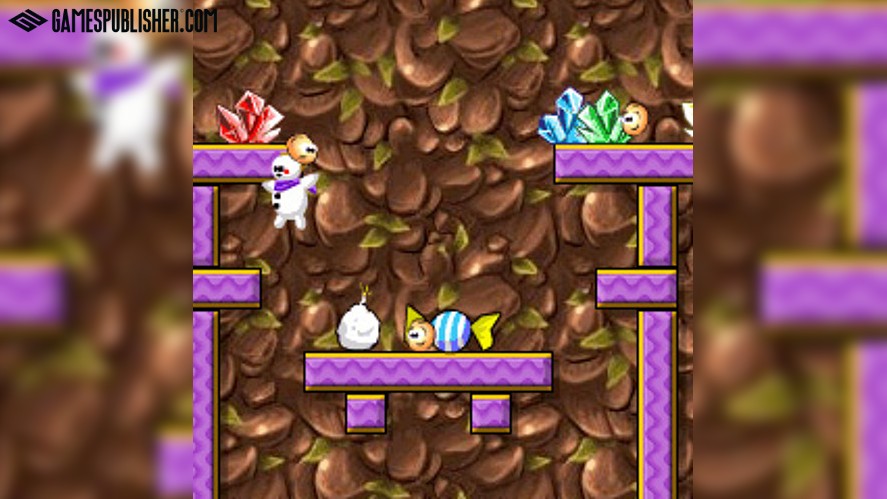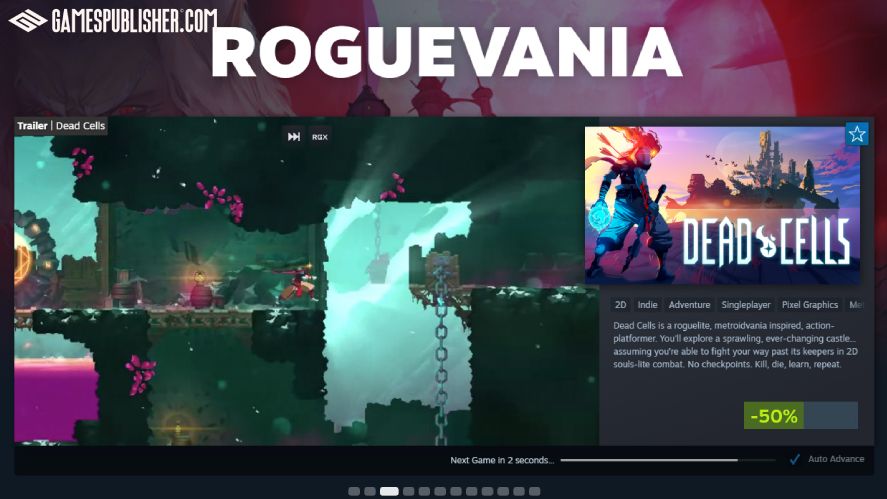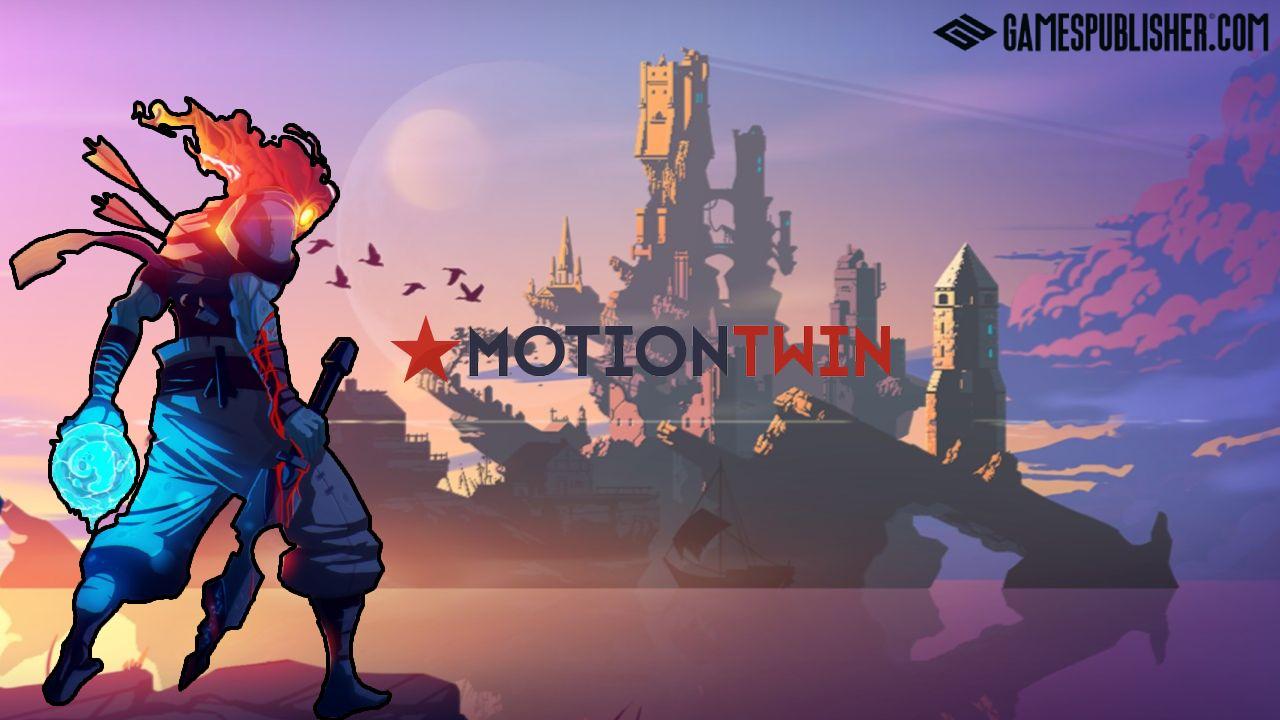Welcome to Gamespublisher.com, a place where we talk about game development and how games get made and shared with the world.
Today, we’re looking at Motion Twin Games, a small studio from France that most people know because of Dead Cells.
The game turned into a huge success, but the team itself is just as interesting as the game. They work together in a rare way, as a cooperative where everyone has the same say and shares the rewards.
For players, developers, and video game publishers, Motion Twin’s story is worth paying attention to. In this article, we’ll walk through how they built Dead Cells, what makes them different, and why their work matters for the indie scene.
Motion Twin Games – Who Are They?
Motion Twin was founded in 2001 in Bordeaux, France. In their early years, the team experimented with different game genres, from puzzle titles to strategy and online survival games.
While many of those projects remained niche, they set the foundation for the style and ideas that would later come together in Dead Cells.
What really makes Motion Twin stand out is the way the studio is structured.
Instead of a traditional company with bosses and employees, this French indie game studio operates as a worker cooperative. Everyone at the studio owns an equal share of the business, and pay is distributed evenly.
In an industry where hierarchies and game publishing demands often guide decisions, this setup allows Motion Twin to focus on creativity and collaboration.
It also gives their projects a distinctive feel, since ideas are shaped by the group rather than handed down from the top.
Motion Twin Games – The Rise of Dead Cells
When Dead Cells first appeared in early access back in 2017, it didn’t take long for players to notice that Motion Twin was onto something different.
By the time the full version launched in 2018, the game had already built a loyal following, thanks to constant updates and a strong back-and-forth between the studio and its community.

The magic of Dead Cells lies in how it blends two familiar video game genres.
On one hand, you get the endless variety of a roguelike, where no two runs are ever the same. On the other hand, you have the structure of a metroidvania, with its branching paths and gated progression.
Together, they formed what fans started calling a “roguevania”, which is a mix that felt new and exciting even in a crowded indie market.
Critics praised the game’s polish, fluid gameplay, and high replay value, and it went on to win multiple awards.
More importantly, it pushed Motion Twin from a small indie game developer in France to a name recognized around the world.
And instead of stopping there, the studio kept supporting the game with expansions, DLCs, and balance updates, proving Dead Cells wasn’t just a one-time hit but a living project that kept evolving.
What Makes Dead Cells Stand Out
Several factors helped Dead Cells break through in an already crowded indie market:
- Combat and replayability: Smooth controls, challenging enemies, and procedural design kept every run engaging.
- Distinct style and music: A striking pixel-art look paired with a powerful soundtrack gave the game a unique identity.
- Player-driven updates: Motion Twin listened closely to community feedback, using Early Access and ongoing updates to refine and expand the experience.
Together, these elements made Dead Cells more than just another indie hit. The game became a benchmark for what creative, community-focused game developers can achieve.
Other Motion Twin Games Before Dead Cells
Long before Dead Cells took over the indie scene, Motion Twin had been quietly experimenting with different kinds of games.
They weren’t blockbuster hits, but each one gave the studio a chance to play around with ideas that later shaped their big success.
Hammerfest – A Small but Addictive Platformer

One of their early projects was Hammerfest, a quirky little platformer where you climbed through snowy levels, bopped enemies, and grabbed treasure along the way.
It wasn’t flashy, but it had that “just one more try” quality that kept people coming back.
In hindsight, you can already see Motion Twin’s talent for building games that were simple to understand but tough to put down.
Mush – Strategy Meets Suspicion

Then came Mush, which was completely different. This one dropped players on a spaceship and forced them to cooperate to survive, except someone might secretly be working against the group.
That hidden-traitor element made every choice stressful in the best way. It was an early sign that Motion Twin liked to mess with social dynamics and player trust, not just core mechanics.
Die2Nite – Surviving Together (or Not)

With Die2Nite, the studio went even bigger, this time with a multiplayer survival game.
Players had to gather supplies, build defenses, and keep their town alive against daily zombie attacks. The fun and frustration came from the fact that you had to rely on other players.
Sometimes they helped, sometimes they didn’t. That push and pull between teamwork and self-interest is what made the game stand out.
Motion Twin Games – Impact on Indie Development
When Dead Cells came out, it didn’t just win awards; it sent a ripple through the indie world.
The way it blended roguelike runs with metroidvania-style exploration inspired plenty of other developers to try their own spin on the formula.
Before long, “roguevania” became a term everyone recognized, and Motion Twin was at the center of that shift.

Their influence wasn’t only in gameplay. The way Motion Twin runs as a cooperative studio caught a lot of attention.
In an industry often known for crunch and layoffs, their equal-pay, equal-voice model showed that a team can stay independent, fair, and still deliver a global hit.
For many small studios, it’s become a case study in how to build games without giving up values or creative freedom.
Put together, Motion Twin’s mark on the indie scene is clear.
They proved you can change both what games look like and how they’re made. And that’s a legacy other developers are still building on today.
The Future of Motion Twin Games
Even after years on the market, Dead Cells continues to evolve. Motion Twin has supported it with fresh DLC, creative collaborations, and small but meaningful tweaks that keep players coming back.
Few indie games manage to stay this relevant for so long, and that’s a credit to the studio’s willingness to listen to its community.

But players naturally wonder what’s next. Will Motion Twin build another expansion, or are they preparing something entirely new?
The team has been quiet on future projects, which only fuels speculation in fan circles. Whatever comes, expectations will be high, because Dead Cells has set a new standard for what an indie action game can be.
There are hurdles ahead. Moving beyond one mega-hit is a challenge that even big studios struggle with.
For a small cooperative team like Motion Twin, the test will be finding a way to grow while staying true to the unique model that made them stand out in the first place.
If they can manage that balance, their next step could be just as groundbreaking as their last.
Motion Twin New Game
Motion Twin isn’t stopping with Dead Cells. Their next big step is Windblown, an action roguelike that carries over the studio’s love for fast combat and clever design while introducing a brand-new world.
The announcement turned heads because fans have been waiting to see where Motion Twin would go after the massive success of Dead Cells.

With Windblown, they’re not just repeating the same formula but taking the lessons learned and building something new, with its own style and surprises.
If Dead Cells proved Motion Twin could shake up the indie scene once, Windblown might be the game that shows they can do it again.
Conclusion
From their early projects to the breakout success of Dead Cells, Motion Twin has shown what’s possible when a studio takes risks and stays true to its vision.
Their co-op model and bold approach to design set them apart, and their influence can be seen across the indie scene today.
With Dead Cells still growing through updates and DLCs, fans are eager to see what the studio will create next.
No matter the project, Motion-Twin has already proven that great ideas and strong teamwork can make a lasting mark on gaming.
For more stories about the people shaping the future of games, keep following Gamespublisher.com.
Loading survey...

